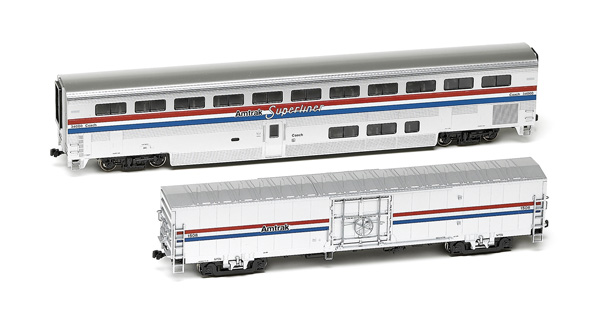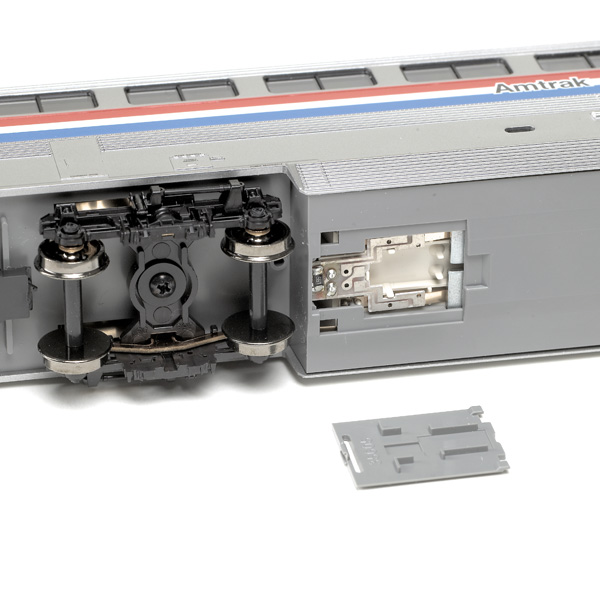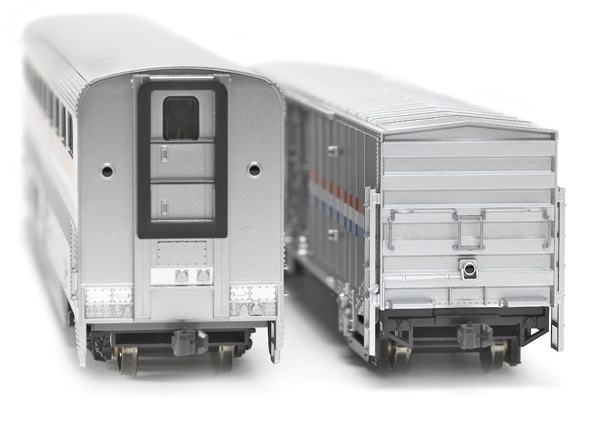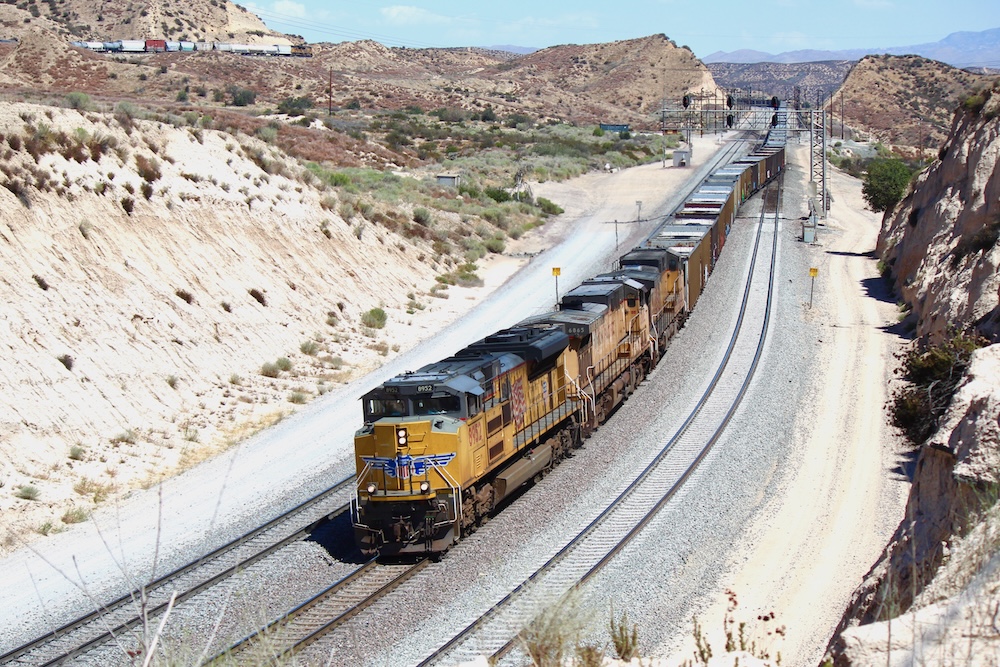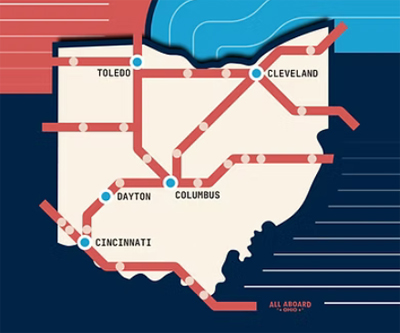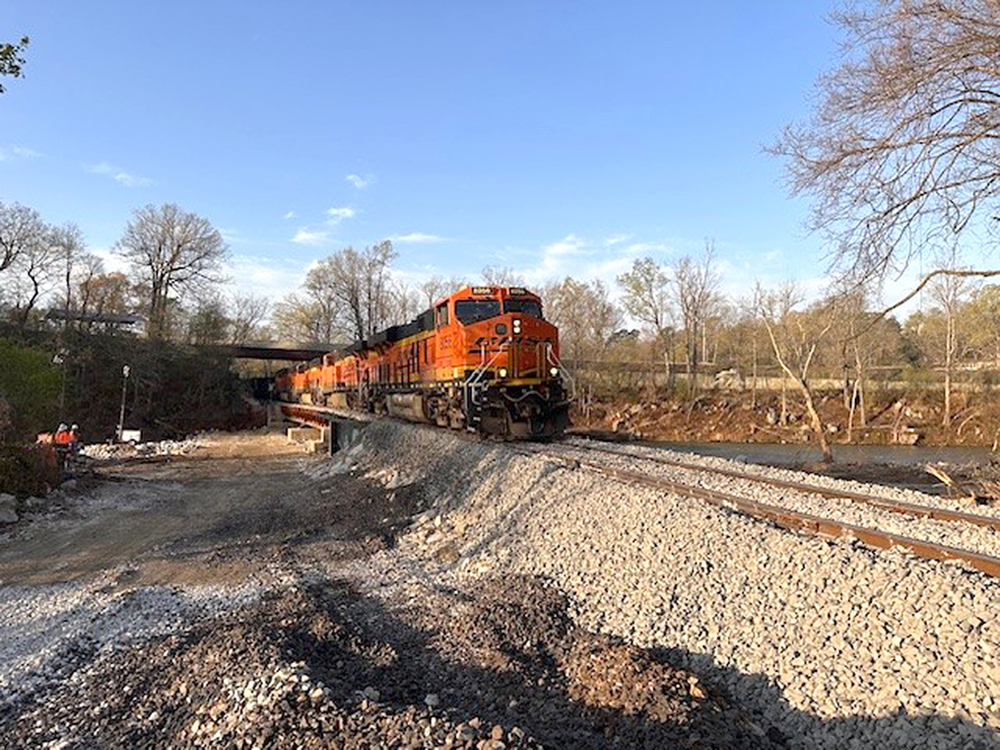Other Amtrak Superliner cars included 70 sleepers, 39 diners, 25 cafe/lounge cars, and 48 coach/baggage cars. Kato has announced plans to produce all of these cars.
Drawings of all five Superliner car types were published in the November 1982 Model Railroader.
Kato’s Superliner coach is cleverly designed with an assortment of interlocking parts, press-fit pins, and tiny latches that hold everything together. Nothing is cemented, so you can carefully disassemble the model to paint or add to the interior details.
The carbody’s sides and ends are molded in a single piece that the roof casting locks into. The car sides are well detailed with realistic fluting, access doors, panel joints, grab irons, and screened openings. The corner grab irons are added individually at the factory.
Molded glazing fits into the win-dow openings, and it’s cast in a realistic shade of gray-tinted plastic. Each window has a printed black frame to simulate the prototype’s rubber mounting gasket. Six loops along the bottom edge of the glazing lock the floor in the body.
A pair of tan plastic castings make up the coach interior. The upper deck snaps into the roof, while the lower deck locks onto the floor. Steel weights and a pair of bronze contact strips are sandwiched between the floor and interior to supply current to the rear marker lights and a separate interior lighting kit (not included).
The car rides on Amtrak’s air-cushioned, European-style four-wheel trucks. They have internal copper contacts that collect current from all the wheels and transfer it to the power strips hidden in the floor. The car is free-rolling thanks to metal RP-25 contour wheelsets and thin axle bearings. The visible axle ends rotate.
While Kato’s model matches the major dimensions in a drawing of the earlier car published in the February 1988 Model Railroader, the model’s details closely match photos of the later version.
The carbody consists of a highly-detailed, one-piece body shell that’s fitted with separately applied ladders, grab irons, and door hardware. All of the cast details are cleanly molded with crisp edges. The floor casting includes some underbody details, but there’s no air brake plumbing or rodding. A steel weight and copper contact strips are sandwiched between the two plastic floor castings.
The rigid-frame trucks match the long-wheelbase GSI high-speed trucks used on the prototypes. Their RP-25 contour metal wheels are mounted on steel stubs that are pressed into insulated tubular axles. All of the wheelsets match the National Model Railroad Association standards gauge.
Concealed copper contacts inside the sideframes collect current from the stub axles and transfer it to the contact strips in the floor. All wheels collect current, and all the axle ends rotate.
A strip of clear plastic transfers the light from the LED out to scale-size lenses cast into the car ends. The coach has two markers high on each end while the MHC has a single marker just above the coupler. On the prototype the MHC has brackets on each end for a portable marker lamp while the coach has built-in markers.
A pair of dummy couplers, shaped like passenger type H Tightlock couplers, are included for realistic close coupling with just under a scale 36″ between the corners of adjacent cars. They will couple when pushed together, but one car must be manually lifted to uncouple the cars.
Both the coach and material handling car have draft-gear boxes that are easily removed to reveal a flat floor with room to install other brands of couplers.
Price: Superliner coach, $59; Material Handling Car, $49
Manufacturer
Kato USA, Inc.
100 Remington Rd.
Schaumburg, IL 60173
www.katousa.com
Description: Plastic and metal, ready-to-run passenger cars
Road name: Amtrak phase 3 (multiple road numbers)
Features
Blackened metal NMRA RP-25 contour wheels (in gauge) mounted on tubular axles
Detailed interior, ready for lights
Eight-wheel electrical pickup
Kato magnetic knuckle couplers mounted at correct height
Minimum radius: 18″
Operating marker lights
Weight: coach is 7½ ounces (3/4 ounce heavy); MHC is 5 ounces (¼-ounce light) compared to the NMRA recommended weights





